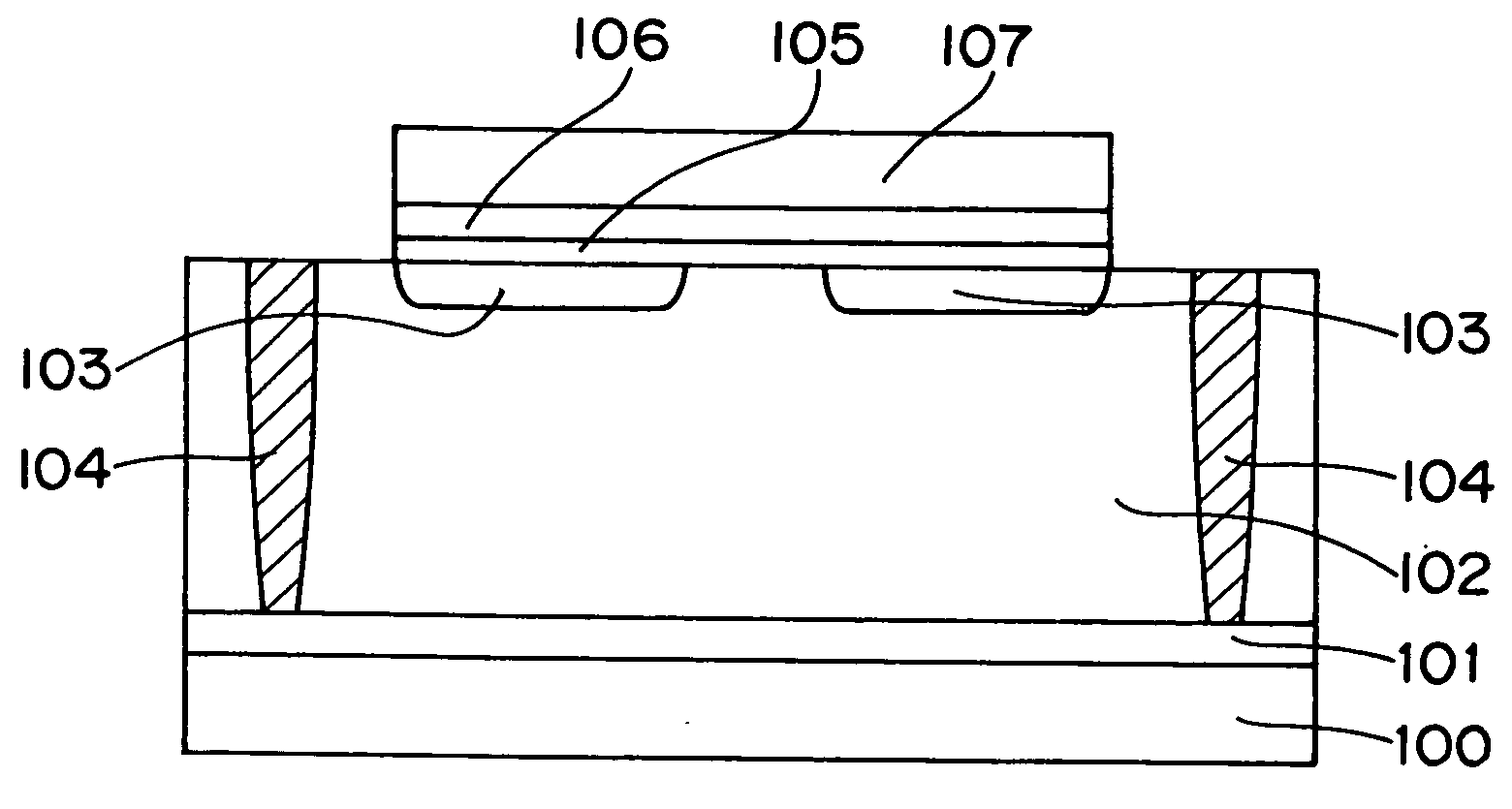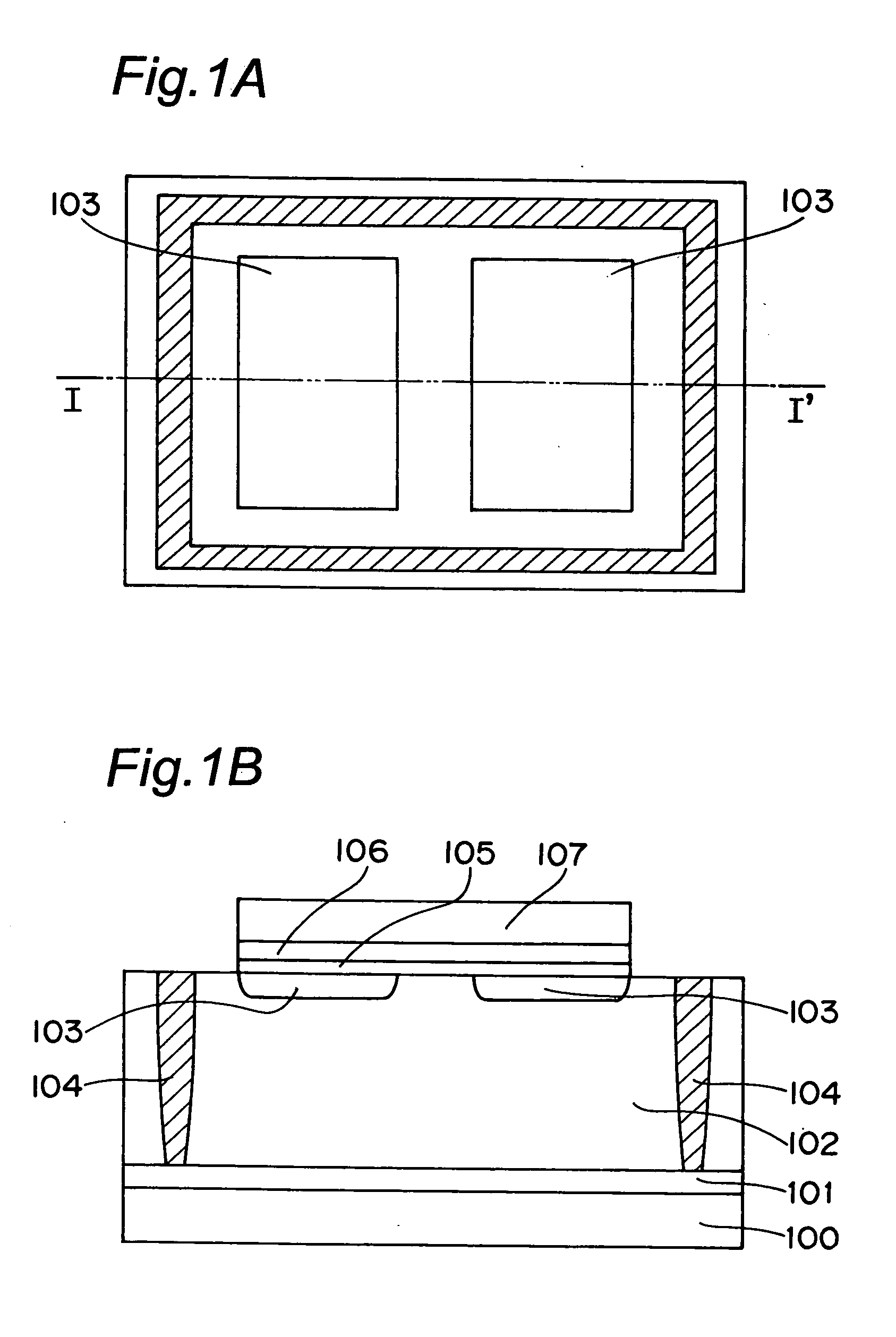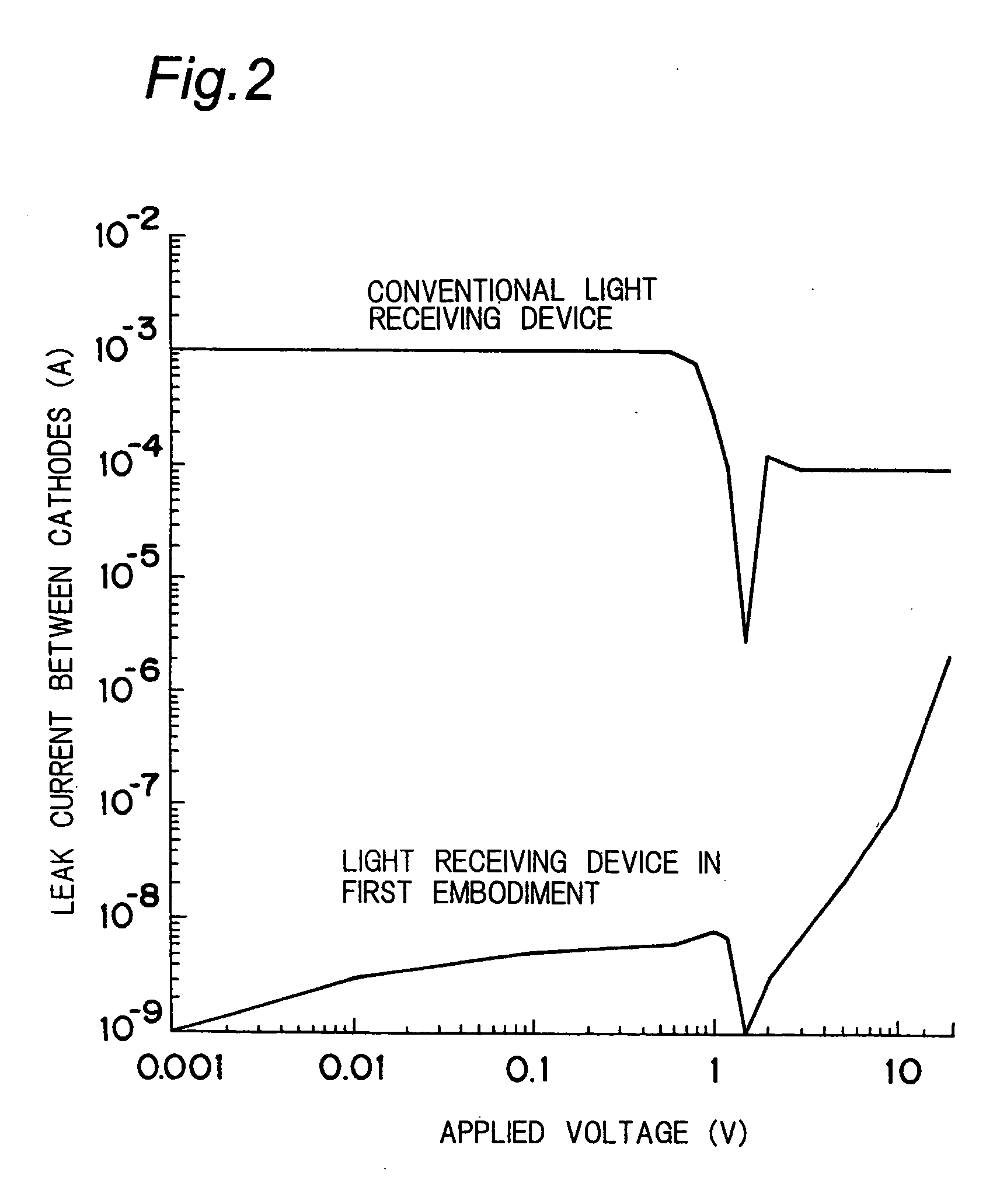Light receiving device circuit-built-in type light receiving unit and optical disk unit
a light receiving unit and circuit-built-in technology, applied in the direction of basic electric elements, semiconductor devices, electrical appliances, etc., can solve the problems of poor production yield and higher cost of conventional light receiving devices, inability to read data from disks, and leakage current between light receiving parts to allow light receiving devices to function properly. , to achieve the effect of excellent sensitivity
- Summary
- Abstract
- Description
- Claims
- Application Information
AI Technical Summary
Benefits of technology
Problems solved by technology
Method used
Image
Examples
first embodiment
[0045]
[0046]FIG. 1A is a plan view showing a light receiving device in a first embodiment of the present invention, while FIG. 1B is a cross sectional view of FIG. 1A taken on the line I-I′. In FIGS. 1A and 1B, contacts, metal interconnections, and interlayer insulating films formed after a contact step are deleted. In FIG. 1A, a first silicon oxide 105, a silicon nitride 106 and a second silicon oxide 107 are deleted.
[0047] The light receiving device comprises a first P-type diffusion layer 101 with impurity concentration of about 1E18 cm−3 and a thickness of about 1 μm, and a P-type semiconductor layer 102 with a thickness of about 10 μm to 20 μm and impurity concentration of about 1E13 to 1E16 cm−3 on a silicon substrate 100. In a surface part of the P-type semiconductor layer 102, two N-type diffusion layers 103, 103 with impurity concentration of about 1E17 to 1E20 cm−3 are disposed to constitute two light receiving parts. In the N-type diffusion layers 103, any element such a...
second embodiment
[0058]
[0059]FIG. 3 is a cross sectional view showing a light receiving device in a second embodiment of the present invention. In FIG. 3, component members having the same functions as the light receiving device in the first embodiment of FIG. 1B are designated by the same reference numerals and detailed description is deleted.
[0060] As shown in FIG. 3, the light receiving device in the present embodiment is different from the light receiving device in the first embodiment only in the point that on the N-type diffusion layers 103, 103 becoming light receiving parts and on the P-type semiconductor layer 102 between these two N-type diffusion layers 103, 103, four-layer translucent films are formed and a molding resin 204 is disposed on the translucent films.
[0061] The four-layer translucent films are composed of a first silicon oxide 200 with a film thickness of about 9 nm, a first silicon nitride 201 with a film thickness of about 39 nm, a second silicon oxide 202 with a film thic...
third embodiment
[0064]
[0065]FIG. 4 is a cross sectional view showing a light receiving device in a third embodiment of the present invention. In the present embodiment, contacts, metal interconnections, interlayer insulating films and the like formed after a contact step are deleted in description.
[0066] The light receiving device comprises a P-type diffusion layer 11 with impurity concentration of about 1E18 cm−3 and a thickness of about 1 μm on a silicon substrate 10, and a P-type semiconductor 12 with impurity concentration of about 1E13 to 1E16 cm−3 and a thickness of about 10 μm to 20 μm on the P-type diffusion layer 11. On a surface part of the P-type semiconductor 12, an N-type diffusion layer 13 with impurity concentration of 1E17 to 1E20 cm−3 in the vicinity of the surface is provided, and a PN junction formed by the N-type diffusion layer 13 and the P-type semiconductor 12 constitutes a light receiving part. It is to be noted that an impurity forming the N-type diffusion layer 13 may be ...
PUM
 Login to View More
Login to View More Abstract
Description
Claims
Application Information
 Login to View More
Login to View More - R&D
- Intellectual Property
- Life Sciences
- Materials
- Tech Scout
- Unparalleled Data Quality
- Higher Quality Content
- 60% Fewer Hallucinations
Browse by: Latest US Patents, China's latest patents, Technical Efficacy Thesaurus, Application Domain, Technology Topic, Popular Technical Reports.
© 2025 PatSnap. All rights reserved.Legal|Privacy policy|Modern Slavery Act Transparency Statement|Sitemap|About US| Contact US: help@patsnap.com



